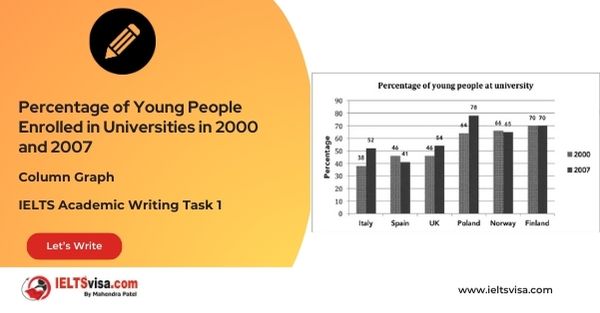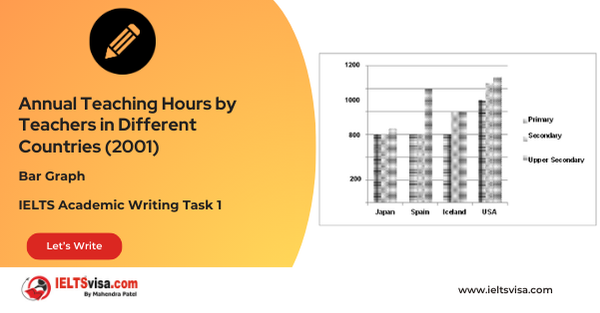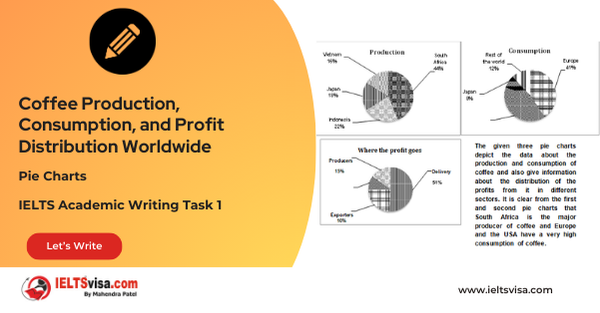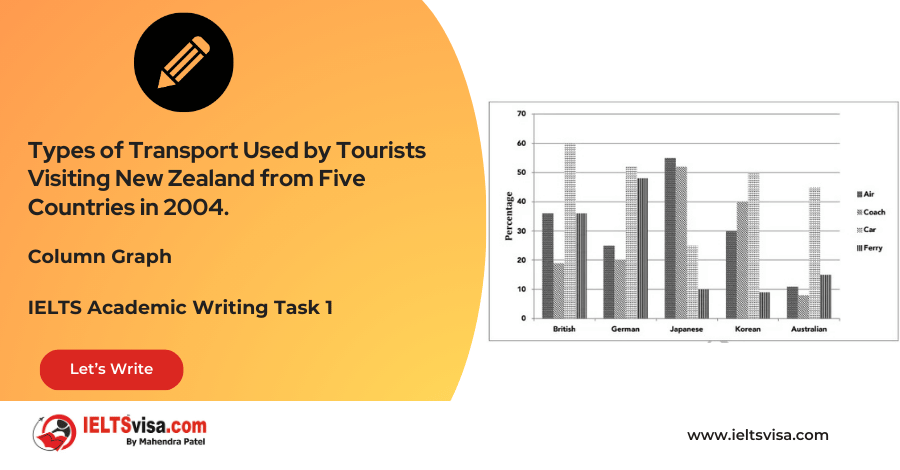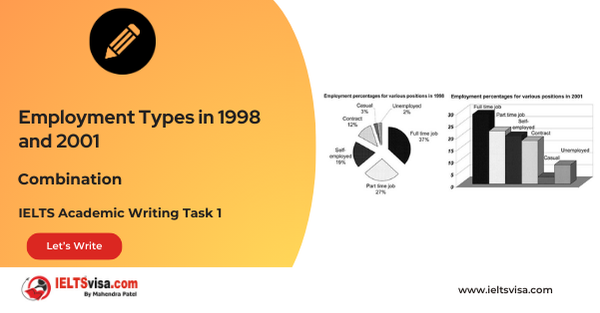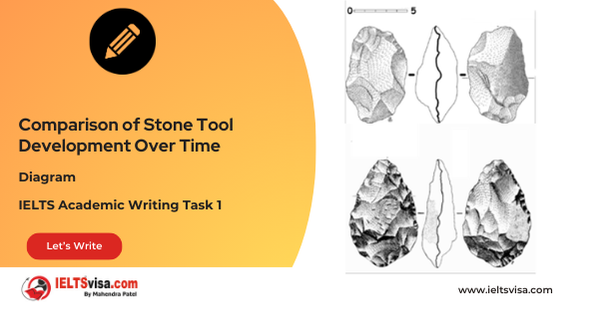Growth of urban population in certain parts of the world including the prediction of the future
IELTS Academic Writing Task 1 - Bar Graph
IELTS Writing Task 1 Question
The chart below gives information about the growth of urban population in certain parts of the world including the prediction of the future. Summarise the information by selecting and reporting the main features and make comparisons where relevant
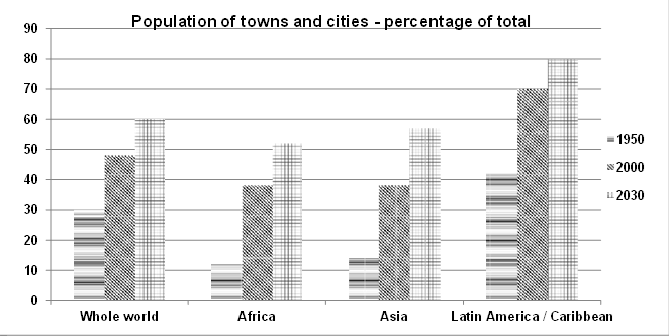
Common Questions for the Bar Graph
1. Graph Type: Column Graph
2.Title: Growth of Urban Population in Different Regions (1950-2030)
3.Units of Measurement : Percentage of total population
4.Who: Urban population in Africa, Asia, Latin America/Caribbean, and the whole world
5. When:1950, 2000, and predictions for 2030
6. Where: Africa, Asia, Latin America/Caribbean, and globally
7. Topic: Trends in urban population growth over time
Comparison Showing and Trends Any change over time (such as an increase or a decrease) is a trend.
Comparison 1 : Urban Population in 1950
- Details:
1. Latin America and the Caribbean had the highest urban population at 42%.
2. Asia and Africa had significantly lower urban populations at 14% and 12%, respectively.
3. Globally, approximately one-third of the population was urban.
Comparison 2: Urban Population in 2000
-
Details:
1. Both Africa and Asia experienced a substantial increase, with urban populations rising to about 38%.
2. In Latin America and the Caribbean, over two-thirds (around 67%) of the population resides in urban areas.
3. The global urban population was nearly equal to the rural population, showing a balance
Comparison 3 : Predictions for 2030
- Details:
1. Urban populations are expected to rise by 10-15% across all regions.
2. Latin America and the Caribbean are projected to have around 80% of their population living in cities.
3. The global urban population is estimated to reach 60%.
Sample Answer
The column graph illustrates the growth of urban populations in Africa, Asia, Latin America/Caribbean, and worldwide from 1950 to 2000, along with predictions for 2030.
Overall, the data reveal significant increases in urban populations across all regions, with expectations for continued growth.
In 1950, Latin America and the Caribbean had the largest urban population at 42%, while Asia and Africa lagged behind, with only 14% and 12% urban residents, respectively. At that time, the global urban population was around one-third of the total population. By 2000, Africa and Asia had nearly tripled their urban populations, reaching approximately 38%. In contrast, Latin America and the Caribbean saw over two-thirds of their population living in cities. Globally, the urban population became almost equal to the rural population.
In 2030, urban populations are expected to grow by 10-15% in all regions. Specifically, around 80% of people in Latin America and the Caribbean are anticipated to reside in urban areas, while the global urban population is projected to rise to 60%.
Top 25 Vocabularies
| Vocabulary (type) | Type | Meaning | Synonyms | Examples |
| Depict (v.) | Verb | To show or represent | Portray, illustrate, represent | “The graph depicts the increase in urban population.” |
| Constitute (v.) | Verb | To make up or form | Comprise, form, account for | “Latin America constituted 42% of the urban population in 1950.” |
| Escalate (v.) | Verb | To increase rapidly | Rise, intensify, increase | “Urban populations escalated in all regions.” |
| Projections (n.) | Noun | Estimates or forecasts of future events | Predictions, forecasts, estimates | “Predictions for 2030 indicate significant urban growth.” |
| Anticipate (v.) | Verb | To expect or predict | Expect, foresee, project | “It is anticipated that urban populations will continue to grow.” |
| Growth | Noun | An increase in size, number, or amount | Expansion, rise, increase | “The growth of urban populations is significant.” |
| Urban | Adjective | Relating to cities or towns | Metropolitan, civic, city-based | “Urban populations expanded rapidly from 1950 to 2000.” |
| Region | Noun | A specific geographical area | Area, zone, territory | “Africa and Asia were the regions with the lowest urban population in 1950.” |
| Lag | Verb | To fall behind in progress | Delay, trail, fall behind | “Asia and Africa lagged behind in urban development.” |
| Reside | Verb | To live or dwell in a place | Inhabit, dwell, occupy | “Around 80% are anticipated to reside in urban areas by 2030.” |
| Approximately | Adverb | Close to but not exactly | About, roughly, nearly | “By 2000, urban populations in Africa reached approximately 38%.” |
| Contrast | Noun/Verb | A clear difference between two things | Difference, disparity | “There was a contrast between urban populations in 1950 and 2000.” |
| Significant | Adjective | Of considerable importance or size | Notable, substantial, major | “Significant increases in urban populations are expected.” |
| Tripled | Verb | Increased threefold | Trebled, increased three times | “Africa and Asia nearly tripled their urban populations by 2000.” |
| Respective | Adjective | Belonging to each of several things | Own, particular, individual | “Asia and Africa’s respective urban populations were 14% and 12% in 1950.” |
| Predicted | Verb | Expected or estimated for the future | Foreseen, projected, anticipated | “Urban populations are predicted to rise further.” |
| Surpass | Verb | To exceed or go beyond | Exceed, outdo, overtake | “The global urban population will likely surpass 60% by 2030.” |
| Expectation | Noun | A belief about what will happen in the future | Anticipation, hope, forecast | “Expectations for continued growth remain high.” |
| Reside | Verb | To dwell in a specific place | Live, inhabit, settle | “Most of the population will reside in urban areas.” |
| Steady | Adjective | Regular and continuous | Stable, consistent, constant | “Urbanization shows a steady upward trend.” |
| Approximately | Adverb | Close to but not exact | Roughly, about, nearly | “Urbanization reached approximately 38% in Africa by 2000.” |
| Dominant | Adjective | Most powerful or influential | Prevailing, leading, primary | “Urban areas became dominant in global demographics.” |
| Peak | Noun | The highest point | Apex, summit, zenith | “Urbanization in Latin America peaked at 80% by 2030.” |
| Accelerate | Verb | To speed up or increase | Expedite, hasten, quicken | “Urban population growth is accelerating globally.” |
| Equally | Adverb | To the same extent or degree | Uniformly, identically, evenly | “The global urban and rural populations were almost equally distributed in 2000.” |

Our Books
Master IELTS Speaking Part 1
IELTS Writing Task 1 Book
IELTS Writing Task 2 Book
Writing Task 1 Question Types
Practice IELTS Other Modules
IELTS Listening
The IELTS Listening test assesses how well you can understand spoken English in various contexts. It lasts about 30 minutes and is divided into four sections with a total of 40 questions. The listening tasks become increasingly difficult as the test progresses.
IELTS Academic Reading
The IELTS Academic Reading section assesses your ability to understand and interpret a variety of texts in academic settings. It is designed to evaluate a range of reading skills, including skimming for gist, reading for main ideas, reading for detail, understanding inferences, and recognizing a writer's opinions and arguments.
IELTS Speaking
The IELTS Speaking test assesses your ability to communicate in English on everyday topics. It lasts 11-14 minutes and consists of three parts: introduction, cue card, and a discussion based on the cue card topic.
IELTS General Reading
IELTS General Reading tests your ability to understand and interpret various types of texts. Here are some key areas and types of content you can expect to encounter in the reading section, along with tips for effective preparation.
IELTS Academic Writing Task 1
In IELTS Academic Writing Task 1, you are presented with a visual representation of information, such as graphs, charts, tables, or diagrams, and you are required to summarize, compare, or explain the data in your own words.
IELTS General Writing Task 1
In IELTS General Writing Task 1, you are required to write a letter based on a given situation. The letter can be formal, semi-formal, or informal, depending on the prompt. Here’s a breakdown of the key components to include in your letter
IELTS Academic Writing Task 2
In IELTS Academic Writing Task 2, you are required to write an essay in response to a question or topic. Here’s a guide to help you understand the essential elements of this task
IELTS Exam Tips
To succeed in the IELTS exam, practice regularly, familiarize yourself with the test format, improve your vocabulary, develop time management skills, and take mock tests to build confidence.
Grammer for IELTS
Grammar is the foundation of effective communication in English. Understanding tense usage, subject-verb agreement, and sentence structure enhances clarity and coherence in writing and speaking.
Vocabulary for IELTS
Vocabulary plays a crucial role in the IELTS (International English Language Testing System) exam, especially in the Speaking and Writing sections. Here’s an overview of why vocabulary is important and how it impacts your performance
RECENT IELTS SAMPLES QUESTIONS AND ANSWERS
Task 1 – Column graph – Percentage of Young People Enrolled in Universities in 2000 and 2007.
20:00 Start Pause Stop [df_adh_heading title_infix="IELTS Writing Task 1 Question" use_divider="on"...
Task 1 – Bar Graph – Annual Teaching Hours by Teachers in Different Countries (2001)
20:00 Start Pause Stop [df_adh_heading title_infix="IELTS Writing Task 1 Question" use_divider="on"...
Task 1 – Pie Charts – Coffee Production, Consumption, and Profit Distribution Worldwide
20:00 Start Pause Stop [df_adh_heading title_infix="IELTS Writing Task 1 Question" use_divider="on"...
Task 1 – Column graph – Types of Transport Used by Tourists Visiting New Zealand from Five Countries in 2004.
20:00 Start Pause Stop [df_adh_heading title_infix="IELTS Writing Task 1 Question" use_divider="on"...
Task 1 – Bar and Pie Chart Combination – Employment Types in 1998 and 2001
20:00 Start Pause Stop [df_adh_heading title_infix="IELTS Writing Task 1 Question" use_divider="on"...
Task 1 – Diagram – Comparison of Stone Tool Development Over Time
20:00 Start Pause Stop [df_adh_heading title_infix="IELTS Writing Task 1 Question" use_divider="on"...

